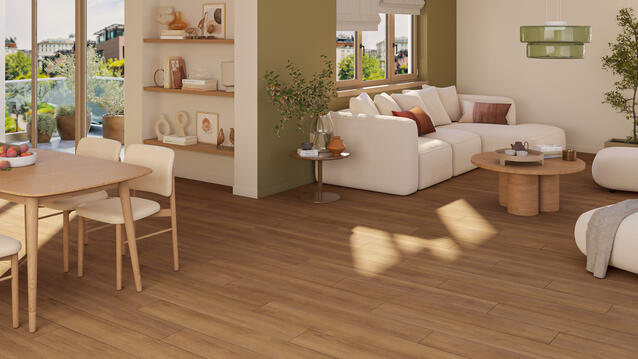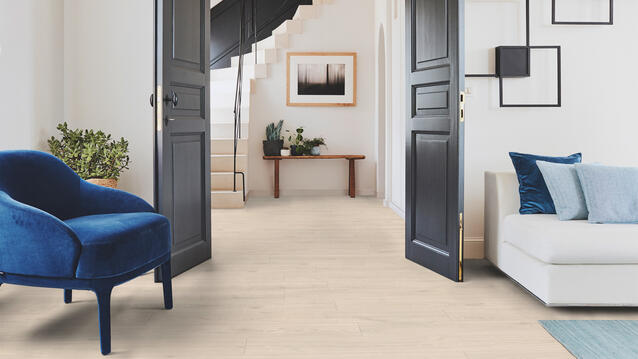
Choosing Laminate floors for a bedroom
Laminate is a synthetic flooring material made from several layers of compressed materials including a core layer of high-density wood fibreboard strengthened with resin. On top of this sits a decorative design layer with a printed image, which is then topped with a transparent overlay.
Laminate has been around for a while now offering an affordable alternative to the more expensive and higher-end hardwood flooring options such as engineered hardwood. And because of the range of designs, colours and style options available, including different surface finishes, Laminate floors can today look almost identical to the wood they’re imitating.
And although bedrooms are considered a low-traffic room, a durable flooring material will withstand heavy bedroom furniture and provide resistance against abrasion and scratches. Thanks to a tough top layer, which offers scratch, stain and water resistance, Laminate offers good durability.
So, for consumers looking for a durable, wood-like finish for their bedroom floor but who find the pricing of hardwood out of reach, Laminate offers an attractive and affordable alternative.
Benefits of Laminate flooring in bedrooms
Pros of using Laminate flooring in bedrooms
• Easy to install
• Affordable
• Available in many designs
Easy to install - Laminate floors are also commonly referred to as 'floating floors' because they can be installed directly over your existing subfloor. At Tarkett, our Laminate floors come with a new profile that makes them fast and easy to install. This new locking system allows a smooth and flexible installation and offers the possibility to choose the way that suits you the best: plank-by-plank, row-by-row, tapping
Affordable – Laminate is relatively inexpensive, especially when compared to alternative bedroom flooring options such as solid and engineered wood. This makes it an attractive option for homeowners looking to install bedroom flooring on a budget.
Available in many designs and styles – Laminate, like luxury vinyl tile and vinyl roll, comes in a range of designs that mimic natural materials. It also comes in a range of styles and plank sizes, all of which play an important part in creating your overall living room impression.
Drawbacks of Laminate flooring in bedrooms
Cons of using Laminate flooring in bedrooms
• Hard underfoot
• No sound insulation properties
• Difficult to repair
Hard underfoot – Laminate flooring is known to be relatively hard underfoot, even with a foam underlayment.
No sound insulation properties – Laminate floors don’t offer sound protection in the same way that carpet does. And the hard surfaces tend to be noisy underfoot. If you install a good quality underlayment, this will help to absorb the sound and provide a degree of thermal insulation.
Difficult to repair - Unlike hardwood, which can be sanded back and refinished several times throughout its lifespan, laminate flooring cannot be refinished. So if the floor becomes damaged or worn, the damaged planks need to be removed and replaced. However, it is often difficult to remove individual planks, and in most cases, the entire floor needs to be removed and replaced.

